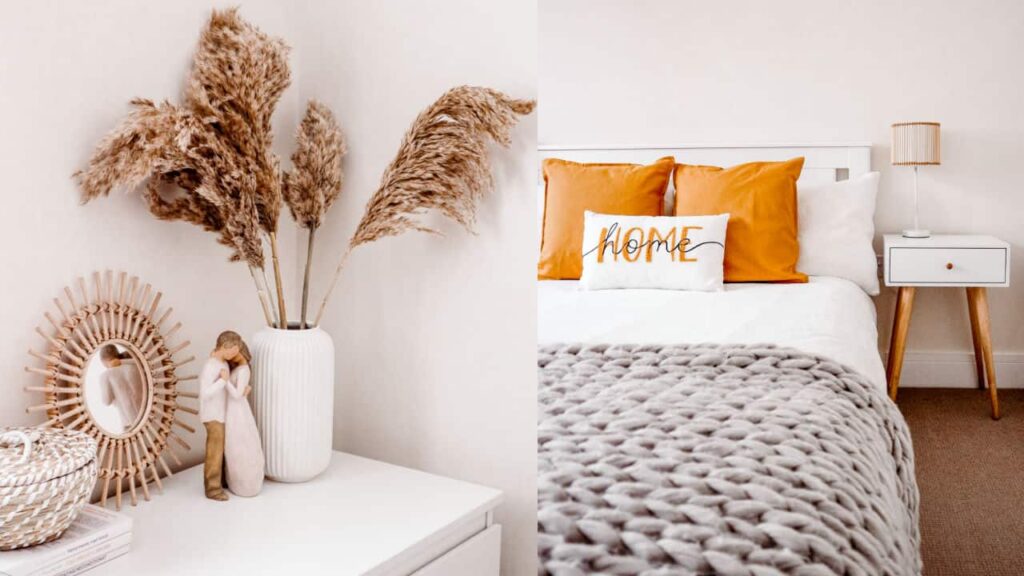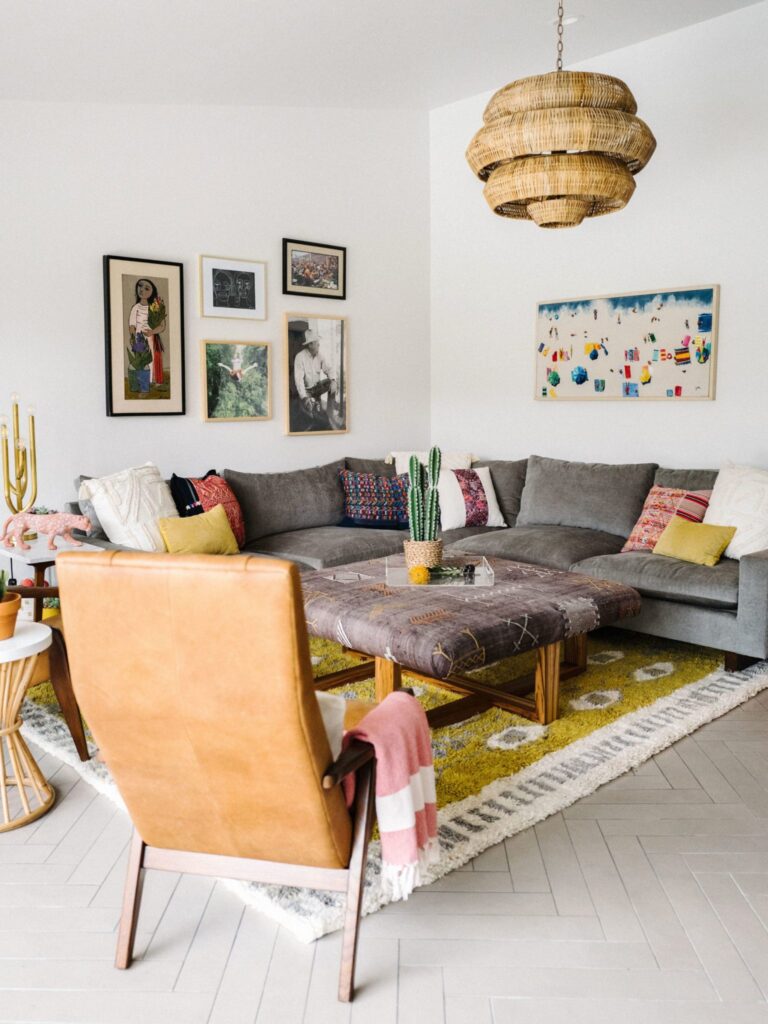Understanding the Concept of Desapego
Letting go can seem daunting, particularly in a society that often prioritizes accumulation—whether it’s career achievements, material possessions, or emotional connections. Desapego encourages individuals to disconnect from these ties and reassess their values. It invites a mindful approach that emphasizes self-awareness, helping us recognize what truly serves our emotional well-being.
The Importance of Emotional Freedom
Imagine carrying a heavy backpack filled with rocks representing past grievances, missed opportunities, or toxic relationships. Each rock symbolizes a burden that can weigh you down and stifle personal growth. Emotional freedom allows you to unpack those burdens, enabling you to experience a lighter, more fulfilling existence. Studies suggest that individuals who practice letting go experience reduced stress levels and increased happiness. By relinquishing grievances, you make space for positive experiences and new perspectives.
Nurturing Enhanced Relationships
When we hold on to past experiences or unhealthy attachments, it can create a cycle of dependency within our relationships. Desapego encourages a more self-sufficient approach, fostering deeper connections based on mutual respect rather than neediness. For example, consider friendships characterized by obligation rather than enjoyment; these often lead to resentment and conflict. By letting go of these unhealthy dynamics, you can cultivate relationships that are authentic and balanced. A study published in the *Journal of Personal Relationships* noted that individuals who practice emotional independence tend to report higher satisfaction in their interpersonal connections.
Promoting Personal Growth Through Letting Go
Letting go opens doors to new beginnings and opportunities for self-discovery. By embracing personal growth, you are allowing yourself to evolve and pursue passions that resonate with your true self. Imagine a career that stifles your creativity; letting go might mean taking a leap into the unknown, pursuing a different path that excites you. Whether it involves a career change or diving into a new hobby, the journey of self-exploration can be exhilarating. Consider the countless stories of individuals who left their corporate jobs to follow their dreams—these narratives often emphasize the liberation that comes with emancipation from old identities.
Tools for Mastering Desapego
Equipping yourself with practical strategies can make the journey towards letting go more manageable. Journaling is one effective way to reflect on and articulate your feelings, helping you identify what to release. Mindfulness practices, such as meditation or yoga, can cultivate a sense of presence that reduces attachment to the past. Additionally, seeking support through therapy or community groups can be invaluable, offering perspectives and encouragement as you navigate this journey.

In a world that often feels rushed and demanding, learning to let go guilt-free can provide a refreshing perspective on life. It allows for introspection, emotional clarity, and a redefinition of what truly matters. By embarking on the path of desapego, you can reshape your narrative—freeing yourself to lead a life enriched with purpose and authenticity.
SEE ALSO: Click here to read another article
Embracing the Journey of Letting Go
Discovering how to let go guilt-free is not just about removing physical objects or ending relationships; it’s an intricate process that encompasses emotional and mental liberation as well. To truly master desapego, one must undergo a journey that promotes understanding, acceptance, and ultimately, transformation. This journey allows individuals to reassess their priorities, leading to a more empowered life. The path is not always easy, but recognizing its importance is the first step towards cultivating a more fulfilling existence.
Identifying What Holds You Back
Before you can let go, it is crucial to identify the emotional anchors that tie you down. Common sources of attachment can include:
- Past Regrets: Lingering thoughts about choices made can prevent you from moving forward.
- Toxic Relationships: Connections that deplete your energy and happiness.
- Material Possessions: Clinging to things that no longer serve your purpose.
- Fear of the Unknown: Worries about what lies ahead can stifle risk-taking.
By recognizing these factors, you empower yourself to begin the process of release. Emotional burden often manifests physically and mentally, making it paramount to acknowledge these aspects in your drive to achieve emotional freedom.
The Role of Mindfulness in Letting Go
Mindfulness practices can be fundamental in mastering the art of desapego. Techniques such as meditation, deep breathing, and moment-to-moment awareness encourage you to observe your thoughts and feelings without judgment. This practice enables you to confront attachments in a non-reactive manner, cultivating a greater sense of control over your emotions. For instance, meditation has been shown to decrease stress and anxiety, which are often exacerbated by unhealthy attachments. A recent study by the American Psychological Association highlighted that regular mindfulness practice can promote a significant increase in emotional resilience, allowing individuals to let go of what no longer serves them more effectively.
Setting Intentions for Letting Go
To embark on a guilt-free journey of release, it’s vital to set clear intentions. Intentions help shape your behavior and keep you focused on your objectives. Consider the following actions when establishing your intentions:
- Clarify Your Goals: Write down what you desire to let go of and what you hope to gain in return.
- Create Affirmations: Use positive affirmations that reinforce your commitment to let go.
- Develop a Routine: Incorporate habits that promote letting go, such as decluttering or engaging in new activities.
Establishing these intentions allows you to harness a proactive mindset, creating a framework that supports your journey toward emotional independence. Through this structured approach, you will discover that letting go is not an end but rather a liberating transition into a more enriched life experience.
| Advantages | Details |
|---|---|
| Emotional Freedom | Letting go of guilt opens the door to true emotional liberation, allowing individuals to embrace life fully. |
| Improved Relationships | Practicing desapego fosters healthier interpersonal connections, as it diminishes unnecessary burdens and expectations. |
| Mental Clarity | Removing guilt enhances focus and mental clarity, paving the way for better decision-making. |
| Personal Growth | Engaging in the process of letting go catalyzes personal development and self-awareness. |
The theme of How to Let Go Guilt-Free Master Como Praticar o Desapego revolves around embracing a mindset that prioritizes emotional wellness. Understanding the essence of desapego is crucial for those looking to lead a more fulfilling life. By recognizing that guilt can hinder progress, one can start the journey towards emotional and mental liberated living. Each advantage outlined above highlights foundational aspects of this transformative process. Delving deeper into these benefits provides not only insight but also practical steps for individuals seeking change. Engaging with this content could lead to significant transformations in one’s outlook on life and relationships. Exploring these advantages further encourages individuals to step past their guilt and into a space of empowerment and happiness.
CHECK OUT: Click here to explore more
Emotional Healing as a Catalyst for Letting Go
Delving deeper into the process of letting go, one must consider the role of emotional healing in achieving freedom from unnecessary attachments. Emotional wounds, whether stemming from unresolved trauma or unfulfilled expectations, can serve as significant barriers to achieving a state of desapego. Engaging in healing practices enables individuals to address these roots, fostering a healthier mindset that is essential for genuine release.
The Importance of Forgiveness
Forgiveness stands out as a cornerstone of emotional healing. It is not merely about absolving others of their wrongdoings; it is primarily a gift you give yourself. Holding onto grudges or resentments can weigh heavily on your emotional well-being, making it difficult to embrace a lighter way of living. Research published by the Journal of Health Psychology indicates that individuals who practice forgiveness report lower levels of depression and anxiety, empowering them to let go of past grievances. To cultivate forgiveness:
- Reflect on Your Feelings: Acknowledge what has hurt you, then consciously release it.
- Practice Self-Compassion: Understand that making mistakes is a part of being human; treat yourself with kindness.
- Engage in Guided Forgiveness Meditation: Utilize resources or apps that lead you through the forgiveness process.
By focusing on forgiveness, you not only heal but also lift the burdens that can block your path to freedom.
Building a Support Network
An often-overlooked element of the letting-go process is the significance of having a support network. Engaging with friends, family, or support groups can provide you with validation and encouragement throughout your journey. Sharing your struggles with others who understand your plight can expedite the healing process. Moreover, numerous studies have shown that individuals with strong social connections tend to navigate emotional challenges more effectively.
- Seek Like-Minded Individuals: Support groups or community centers often host gatherings focused on personal growth and letting go.
- Engage in Conversations: Talk openly about your goals for releasing attachments with close friends who can offer fresh perspectives.
- Utilize Online Platforms: Consider joining forums or social media groups dedicated to emotional wellness and desapego.
These connections not only bolster your resolve but also remind you that you are not alone on this path.
Embracing New Experiences
Finally, as you venture toward a guilt-free release, consider opening yourself to new experiences as a form of self-discovery. Trying out activities or interests that excite you can shift your focus from what you are letting go to what you are gaining. Engaging in hobbies, joining classes, or volunteering can introduce you to new passions and relationships. A shift in focus can lessen the pain of letting go while enriching your life. Research shows that individuals who invest time in new experiences often report increased happiness and well-being.
- Explore Interests: Sign up for workshops or classes that intrigue you.
- Volunteer: Find causes that resonate with you and dedicate time to helping others.
- Travel or Explore: Broaden your horizons by visiting new places or engaging with different cultures.
By viewing the process of letting go through the lens of opportunity, you cultivate a mindset that embraces change, setting you on a path towards emotional liberation.
CHECK OUT: Click here to explore more
Conclusion
In the journey of letting go guilt-free, embracing the concept of desapego offers a transformative pathway to emotional freedom and personal growth. Throughout this exploration, we’ve identified crucial elements that empower you to release attachments that no longer serve you. By prioritizing emotional healing, you pave the way for a healthier mindset, allowing healing practices and self-reflection to take center stage.
Moreover, practicing forgiveness emerges as a vital tool in shedding the weight of past grievances, reminding you that forgiving others—and yourself—is a profound gift. The supportive roles of friends, family, and community cannot be overstated; building a support network creates a nurturing environment that reinforces your journey toward letting go.
Finally, inviting new experiences into your life cultivates a sense of excitement and opportunity. Participating in activities that inspire you can shift your focus away from what you’re letting go to what you’re gaining, paving the way for enhanced well-being. Research indicates that those who actively engage with new pursuits often report greater satisfaction in life.
As you take these steps toward a guilt-free release, remember that the process of desapego is an ongoing journey. Embrace each stage with an open heart, and celebrate the liberation that comes from letting go. In doing so, you not only free yourself emotionally but also foster a life full of new possibilities and deeper connections.

Linda Carter is a writer and organization expert specializing in minimalism and personal organization. With extensive experience helping individuals create clutter-free, functional spaces and adopt mindful habits, Linda shares her knowledge on our platform. Her goal is to empower readers with practical advice and strategies to simplify their lives, stay organized, and achieve a sense of calm and balance in their daily routines.
















